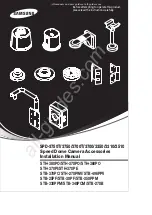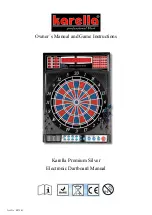
Assembly & Operation Manual
14
4. After the passage is complete, barrier arms rotation angle is monitored by
microcontroller with optical sensors of control mechanism. With rotation angle of
more than 67° the act of passage is registered. One of relay outputs
PASS A
or
PASS B,
according to the direction of the passage, becomes active. Microcontroller
forms the instruction to the control mechanism for blocking the turnstile rotation
mechanism.
5. After the passage is complete, i.e. when barrier arms are reset to the closed
position (120° rotation), turnstile rotation mechanism is blocked. Relay output
PASS A
/
PASS B
becomes normal.
6. If barrier arms rotation hasn’t started, then the command for blocking rotation
mechanism is formed as hold time passes in unblocked mode (5 seconds from
receiving the instruction by default).
7. Turnstile is ready for next passage.
5.3 Control devices of the turnstile
The turnstile can be operated from the following control devices:
•
the RC panel;
•
the WRC;
•
the ACS controller.
The above devices can be connected to the turnstile as follows:
•
any device separately;
•
in any combination with each other;
•
all devices simultaneously (in parallel).
Note:
At the parallel connection of the above devices to the turnstile the superposition
of the control signals from them may occur. In that case the turnstile response will
conform to response to the obtained combination of input signals. (App. 1 and 2).
5.3.1
Connection of the RC panel
The RC panel is connected to the contacts
GND
,
Unlock A
,
Stop
,
Unlock B
,
Led A
,
Led Stop
and
Led B
of the
XS1
connector block in accordance to the connection layout of
the turnstile (see Fig. 13).
Figure 8 – Standard RC-panel orientation regarding IP-Stile
Summary of Contents for TTD-08A
Page 1: ......
Page 38: ...www perco com export perco ru ...
















































